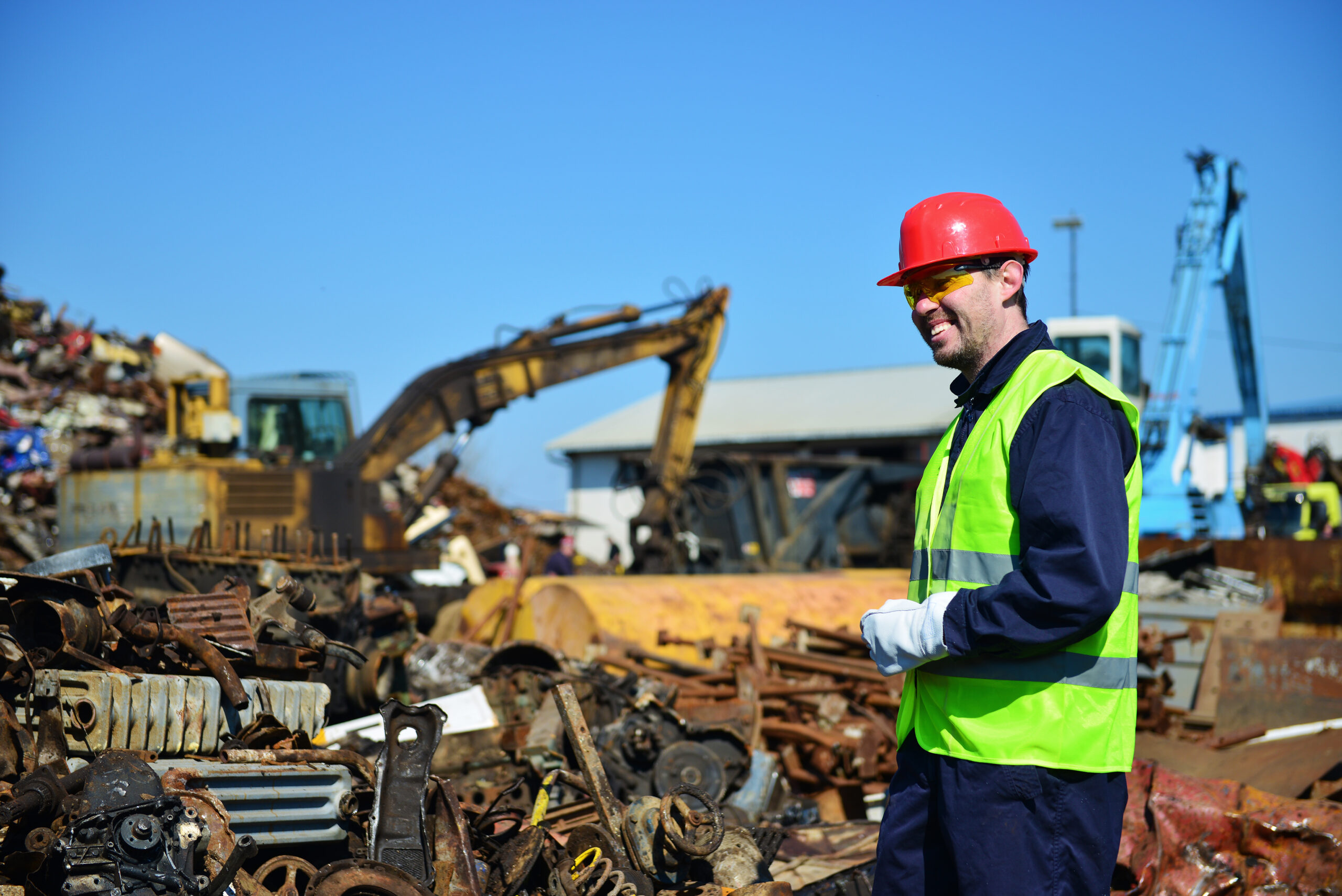While economic situation brings focus on improving ways to increase efficiency in the workplace, these money-saving ideas should be in place during all times. They are best practices that not only save money, but they also save time and cut down on waste, which critical in these eco-aware times.
Waste management goes beyond limiting the amount you put into the dumpster or put out for the garbage collector each week. It’s a coordinated and purposeful strategy that starts at the planning stages of a project to identify the appropriate amount of resources needed to accomplish the goals of the project. By recognizing where waste can occur and implementing measures to minimize that waste, your project team will be taking steps to reduce excess and boost efficiency.
From day one, waste management should be a consideration on the project to benefit the bottom line, the community, and the environment.
Partners in the project should commit to doing everything within their specific disciplines to minimize waste. Plans should be crafted for the project to coordinate the delivery, storage and maintenance of materials and equipment onsite, with a single contact (likely with the General Contractor) being the responsible party for overseeing that operation. Parties should commit to using prefabrication as much as possible (more on this later) to reduce waste on the job site.
Other items to be discussed at preconstruction meetings: a commitment to avoid printing out material when possible to save paper; to use energy efficient tools and supplies (like light bulbs) throughout the project; to reduce soil and water runoff from the construction site; and to maximize use of recycled material when available.
However, sometimes you should periodically go outside of your normal network of suppliers to query other potential vendors about their inventory, their pricing, delivery policies and other factors that may have changed. Your company isn’t static: how you operated two years ago isn’t the same as how you operate now. The same is true for their companies: they may have expanded their products, lines, or services. Plus, by opening those channels of communication, you can learn if they have products, materials, or parts that you may need for another job in the future.
The knowledge and relationships you develop can help you head off a supply shortage that will waste time and resources on a project, more easily allow you to survey sources for materials, and develop back-up plans in case one of your regular vendors has fulfillment issues.
Just because it’s not perfect, it doesn’t mean it’s valueless. It’s a starting point from which you can determine initial estimates of what resources will be needed when. Your procurement managers can use this data to plan out when they will solicit bids and order materials. Early review of this data can also help procurement professionals look at things like raw material pricing and other commodities and market conditions to determine the best time to contract for the material.
BIM data also provide the fastest, most efficient way to process change orders, giving your teams in the field, in the fab shop and in the office immediate notice of when the model is altered, giving timely alerts of significant redesigns that would require changes in orders and manpower again, avoiding wasting materials and reducing worker “downtime.”
Through modeling, parts can be identified for prefab and assigned to the proper trade or vendor, where the part will be manufactured to the precise spec of the detailer. With shared data files, changes can be made up to the second that work order is handed to the skilled tradesman. No need for rework. No wasted time or material. Assigning tasks to a prefab shop makes sense economically and environmentally.
Your logistics team coordinated with other stakeholders on the project should be able to tell you when anything from heavy equipment like an excavator or a crane will be on-side to the expected delivery date of light fixtures that need to be installed. They’re the linchpin to successful operations: they will help you know when things can happen based on the arrival times of material, equipment, and people.
As with your procurement team, they will identify when material needs to be onsite, reducing downtime and increasing productivity. They’ll also make the proper arrangement for the removal and hopefully, the recycling of waste material from the job site. And they’ll arrange for the return of unused products and material for potential refunds, when possible.
Bumping up security is one way you can avoid this waste, but there are other strategies as well. Preparing a locked and secure structure like a shed or a pen to store materials can both thwart burglars as well as provide protection for tools and equipment. Scheduling the delivery of materials so they’re not on site for long periods prior to use cuts down on the window of opportunity for malfeasance or mischief.
In this case, money spent wisely will result in savings itself. Each job site is different, with different challenges and conditions. On smaller jobs, it may be possible to collect and leave with your tools daily, something that cannot be done on larger projects. The construction of a storage shed, hiring of guards, or fencing off the site may be prudent options to secure your building site.
Share with your project team when material orders are due, what specialized equipment will be on site, and who is responsible for specific tasks helps the team coordinate to reduce duplication and wasted effort.
Effective communication fixes problems before they become major, and problems equate to waste: wasted time, materials, and manpower. Letting your teammates know about scheduled activities and deliveries allows the entire time to plan around them and perhaps piggyback on your schedule to reduce costs and improve efficiency.
Efforts to cut waste not just in construction, but in all business are taking center stage. From reducing material waste on a job site to lowering the environmental impact and maximizing labor in a tight job market, being economical with resources becomes increasingly important to the bottom line of your projects, your company, and the planet.
Waste management goes beyond limiting the amount you put into the dumpster or put out for the garbage collector each week. It’s a coordinated and purposeful strategy that starts at the planning stages of a project to identify the appropriate amount of resources needed to accomplish the goals of the project. By recognizing where waste can occur and implementing measures to minimize that waste, your project team will be taking steps to reduce excess and boost efficiency.
From day one, waste management should be a consideration on the project to benefit the bottom line, the community, and the environment.
Careful Preconstruction Planning
During the planning stages of a project, when all the stakeholders are setting their operational parameters and identifying benchmarks, participants should decide how they would like to best address waste management as a team. The client should set the goals not just for the energy efficiency or LEED certification of the project, but also for the entire process to construct the structure.Partners in the project should commit to doing everything within their specific disciplines to minimize waste. Plans should be crafted for the project to coordinate the delivery, storage and maintenance of materials and equipment onsite, with a single contact (likely with the General Contractor) being the responsible party for overseeing that operation. Parties should commit to using prefabrication as much as possible (more on this later) to reduce waste on the job site.
Other items to be discussed at preconstruction meetings: a commitment to avoid printing out material when possible to save paper; to use energy efficient tools and supplies (like light bulbs) throughout the project; to reduce soil and water runoff from the construction site; and to maximize use of recycled material when available.
Strengthen Procurement Relationships
One of the keys to cutting down on waste is having good relationships with the people from whom you get supplies, equipment, and machinery. You know their order and delivery schedules. You can ask them to make special arrangements for your orders. And you know that they’ll work with you through delivery and billing problems.However, sometimes you should periodically go outside of your normal network of suppliers to query other potential vendors about their inventory, their pricing, delivery policies and other factors that may have changed. Your company isn’t static: how you operated two years ago isn’t the same as how you operate now. The same is true for their companies: they may have expanded their products, lines, or services. Plus, by opening those channels of communication, you can learn if they have products, materials, or parts that you may need for another job in the future.
The knowledge and relationships you develop can help you head off a supply shortage that will waste time and resources on a project, more easily allow you to survey sources for materials, and develop back-up plans in case one of your regular vendors has fulfillment issues.
Make Use of BIM Data
The data you collect when modeling is exceptionally valuable on several levels. Used properly, models can give you near perfect estimates on the amount of material you’re need for the project, right down to the dimensions of elements. (Learn more about how eVolve can make quick work of assembling your Bill of Materials here .) From a waste-reduction standpoint, you could eliminate waste if you simply ordered the material detailed in your model but of course, that’s not how construction works, given change orders, materials damage, and normal worksite errors because of unexpected real-world variations from a plan.Just because it’s not perfect, it doesn’t mean it’s valueless. It’s a starting point from which you can determine initial estimates of what resources will be needed when. Your procurement managers can use this data to plan out when they will solicit bids and order materials. Early review of this data can also help procurement professionals look at things like raw material pricing and other commodities and market conditions to determine the best time to contract for the material.
BIM data also provide the fastest, most efficient way to process change orders, giving your teams in the field, in the fab shop and in the office immediate notice of when the model is altered, giving timely alerts of significant redesigns that would require changes in orders and manpower again, avoiding wasting materials and reducing worker “downtime.”
The Power of Prefab
Prefab cures a lot of ills. Compared to elements that are fabricated on site, prefab materials are less expensive, less wasteful and have better quality. Materials can be ordered for a prefab shop, where the element is made and put through quality control to make sure it fits specs. If there is material left over, it can be recycled or repurposed. In the controlled environment of a prefab shop, the manufactured part will be made in a cheaper, safer manner with better quality. It can be kitted and shipped to the job site for immediate installation.Through modeling, parts can be identified for prefab and assigned to the proper trade or vendor, where the part will be manufactured to the precise spec of the detailer. With shared data files, changes can be made up to the second that work order is handed to the skilled tradesman. No need for rework. No wasted time or material. Assigning tasks to a prefab shop makes sense economically and environmentally.
Use the Logistics Linchpin
From having the right material at the job site or the prefab shop, to having the right skilled tradesmen scheduled for installations, logistics play a key role in making sure everything gets done according to schedule. It’s also integral to cutting down on potential generators of waste on a job.Your logistics team coordinated with other stakeholders on the project should be able to tell you when anything from heavy equipment like an excavator or a crane will be on-side to the expected delivery date of light fixtures that need to be installed. They’re the linchpin to successful operations: they will help you know when things can happen based on the arrival times of material, equipment, and people.
As with your procurement team, they will identify when material needs to be onsite, reducing downtime and increasing productivity. They’ll also make the proper arrangement for the removal and hopefully, the recycling of waste material from the job site. And they’ll arrange for the return of unused products and material for potential refunds, when possible.
Keep Job Sites Secure
Significant factoring into the waste found on job sites is the loss or damage of materials, tools and equipment due to weather, vandalism, theft or other factors. Damaged tools and machines must be replaced for the work to safely continue. Tools, wiring, or tubing may be stolen from the site to be turned in for scrap. Equipment that was going into the structure particularly household appliances get taken off building sites.Bumping up security is one way you can avoid this waste, but there are other strategies as well. Preparing a locked and secure structure like a shed or a pen to store materials can both thwart burglars as well as provide protection for tools and equipment. Scheduling the delivery of materials so they’re not on site for long periods prior to use cuts down on the window of opportunity for malfeasance or mischief.
In this case, money spent wisely will result in savings itself. Each job site is different, with different challenges and conditions. On smaller jobs, it may be possible to collect and leave with your tools daily, something that cannot be done on larger projects. The construction of a storage shed, hiring of guards, or fencing off the site may be prudent options to secure your building site.
Ensure Effective Communication
It can’t be said enough: communication is the key to accomplishing your project goals. It’s also the key to reducing waste on the project. Whether it’s clearly expressing your goals and objectives with fellow stakeholders in your preconstruction planning or advising a subcontractor about the schedule they’ll need to meet, having open lines of communications makes operations run smoother.Share with your project team when material orders are due, what specialized equipment will be on site, and who is responsible for specific tasks helps the team coordinate to reduce duplication and wasted effort.
Effective communication fixes problems before they become major, and problems equate to waste: wasted time, materials, and manpower. Letting your teammates know about scheduled activities and deliveries allows the entire time to plan around them and perhaps piggyback on your schedule to reduce costs and improve efficiency.
Efforts to cut waste not just in construction, but in all business are taking center stage. From reducing material waste on a job site to lowering the environmental impact and maximizing labor in a tight job market, being economical with resources becomes increasingly important to the bottom line of your projects, your company, and the planet.





